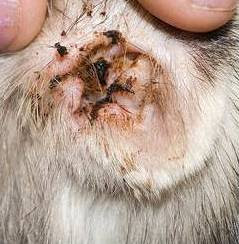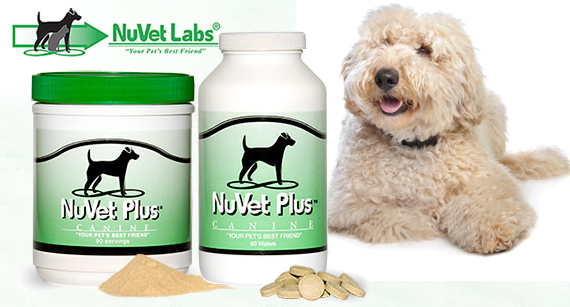


 How to Care for Your Labradoodles or Aussiedoodles Ears
How to Care for Your Labradoodles or Aussiedoodles Ears For Doodle and Poodle lovers, one of the things we love about our beautiful dogs is their glorious thick and curly, soft and non-shedding coats!
All that beauty comes with a price and the price is… grooming! Those luxurious coats come with a lot of hair in their ears and the weight of the hair combined with the shape of the ear flap itself can cause a lack of airflow in the ear canal and a warm wet environment for yeast and bacteria to thrive!
Yeast and bacteria overgrowth can cause irritation, itching, and painful ear infections.This can be avoided by checking your dog’s ears regularly and consistently grooming them, starting when they’re young puppies. Also just knowing what a healthy ear should look and smell like can help you to identify when your dog’s ears are going south.
Issues that can cause ear infections would be poor hygiene, hot, humid weather, and the use of products or ear drops that alter the natural environment of their ears.
Simply take a cotton pad or ball, drizzle a bit of ear cleaner onto the cotton pad, and clean all around the outside of the ear canal and in the ear canal. The cleaner you use is important, and my absolute favorite ear cleaner would be Epi-Otic by Virbec . If your dog’s ears look red, inflamed, or painful, consult your veterinarian before cleaning. When in doubt, consult your veterinarian.
Traditionally, it was believed that ALL Poodles and Doodles needed to have hair-free ears, and ear plucking was a routine component of dog grooming. However, recent evidence has revealed that ear plucking in normal, healthy ears is not always necessary and, in fact, may cause more irritation and infection, especially in dogs who have sensitive skin. Every dog is different.
All Dog owners need to figure out what works best for their individual dogs and understand that one solution may not be the right solution for all dogs.

– Check out this amazing Homeopathic Ear treatment- The Blue Power ear cleaner!
Ear mites are probably the most frequent ear problem found in dogs and cats; in severe cases, you can easily recognize them. If your pup scratches its ears, tilts its head to one side, or grumbles or growls when you rub its ears… it’s time to take a closer look.
A bad ear mite infection can look like dirty, crumbly coffee grounds clumped up or a crusty messthat, when separated, looks somewhat flaky. And there are usually entire truckloads of this mess way down in the ears before you notice anything amiss.
If you believe your dog has ear mites, it is especially important to check all your pet’s ears, as ear mites are passed from host to host and can be a real pain to treat in cats!
Along with using an Ear Mite treatment, you want to thoroughly wash your dog around their neck, shoulder, head, and ears as well as their feet with a good shampoo. A medicated dog shampoo or a shampoo that contains chlorhexidine would be best, but in this case, any dog shampoo will do!
Most Ear Mite treatments will need to be repeatedafter 14 days to get rid of any newly hatched mites that emerge after the initial treatment.
Don’t forget to wash their bedding and their collar. Remember to wash the bedding again when you repeat the treatment in 2 weeks. If they have a bed that’s not washable, just throw it away and buy a new one.
Adams Ear Mite Treatment For Dogs :
 Signs Your Dog Has A Yeast Ear Infection!
Signs Your Dog Has A Yeast Ear Infection!If your dog has a yeast ear infection, you may notice one or more of the following symptoms: Red or brown waxy discharge in the ear. Itching, scratching & pawing at the ear. A cheesy or musty smell coming from the ear. A sniff test will usually tell you if something is off.
Again itchy ears, often scratched until they start bleeding, watery discharge, and an overall miserable, high-pitched whining during scratching or restlessness.
A yeast infection may require veterinary care and may be harder to treat than a regular ear infection, as they often tend to come back.
First, you can always try treating them with Zymox and a probiotic for dogs with common ear infections, and you may also want to switch their dog food formula.
Ear infections are extremely painful to a dog and often present themselves with heads turned slightly sideways, constant ear shaking, and lots of scratching, often combined with high-pitched whining or a deep groaning.
They can be caused by a number of variants, including injuries, foreign objects stuck in the ear, and excessive scratching.
Some dogs are simply more prone to them than others.
In bad cases where the infection isn’t caught right away, the ear canal will be very painful, hot to the touch, and swollen, and the puss may run out with a bad smell.
Remember: Dogs can be in a lot of pain and still show very few outward signs.
Get your puppy used to it from day one.. you don’t need to pluck the hair right away, and I actually wouldn’t unless there’s a problem; just get them used to the sensations from messing with their ears so when the time comes, they won’t be as concerned.
The ear care cleaner I trust and use the most is the Epi-Otic Ear Cleanser. My Veterinarian recommended this to me, and it’s become part of my grooming toolbox ever since. Why? Because it just works.
Zymox is hands down the best eat infection treatment I’ve found, and it’s never failed me.
Even when expensive vet appointments, cleanings and drugs/prescriptions didnt work, Zymox has!
The Only No Pre-Clean Once-a-Day Dog Ear Solution
 In dogs, food allergiesare most often the cause of itchy skin and ears, as well as secondary infections of the skin and ears. An ear infection is described in medical terms as Otitis externa.
In dogs, food allergiesare most often the cause of itchy skin and ears, as well as secondary infections of the skin and ears. An ear infection is described in medical terms as Otitis externa.
Allergies to food can also cause inflammation in the intestines, which can lead to bacterial and/or yeast overgrowthin the intestines, which can then spread to the whole body, including the ears.
One study showed that 55% of 65 food-allergic dogs had otitis externa, and the clinical signs of otitis often preceded other signs of food allergy in 34% of the cases.
Many dog owners feed their dogs a single type of protein for several years, mostly because they’ve discovered what their dogs enjoy. However, this can also increase their risk of developing an allergic reaction to that food. For example, beef is such a common ingredient in dog food that numerous dogs end up allergic to it.
The most common food allergens in dogs is proteins (most common allergens in descending order): beef, dairy, wheat, egg, chicken, lamb/mutton, soy, pork, rabbit, and fish. Rabbit and fish are by far less common food allergens than the others.
If your dog doesn’t have food allergies, then I do recommend switching it up every few months by changing the protein in their kibble. If that’s a new concept for your dog, then make sure to transition them to new formulas over a few days’ time, but eventually, if they’re healthy dogs, they should be able to eat pretty much anything without experiencing issues like diarrhea.
You cannot cure your dog’s food allergies, but you can successfully manage them. Once the allergen is identified, the best treatment is total avoidance.
It can take a long time for symptoms of food allergies to become apparent. Often dogs will appear to ‘suddenly’ become allergic to a food they’ve been eating for months but it’s actually been occurring for much longer.
It can take several weeks to months for clinical signs to resolve once the allergenic agent is removed from the animal’s diet. Up to 30% of food-allergic pets may have other allergies, such as a flea allergy dermatitis or atopy (environmental allergies).
Apple cider vinegar, coconut oil, or aloe vera can be put on the skin to calm any itching. Oatmeal shampoo can also help to relieve itching, burning, and dry skin.
A good probioticshould also help to restore the good bacteria in your dogs gut. I’ve linked a couple of probiotics I use below.
I don’t believe in over-supplementing dogs; however, I do believe in Nuvet Plus as a daily vitamin for coat and skin health and building their immune systems, and I’ll also use a probiotic when I have a dog who’s having intestinal issues or taking a course of antibiotics.

Designed to soothe the digestive tract lining
Provides ingredients that support proper immune function and microbial balance
If you have a dog or puppy suffering from diarrhea or poor intestinal health, I HIGHLY RECOMMEND Purina’s Fortiflora. My vet prescribed it, but it can also be purchased online without a prescription.
We have a Private Group on Facebook that's just for our Dreamydoodle Puppy Families
!
Plz Click Below to Join Us.. Please don't forget to answer the questions on the join request screen so our Admins know to accept your request!


Dreamydoodles.com, participates in various affiliate marketing programs. We may earn commissions on purchases made through links to carefully selected products we recommend. The commissions come at no extra cost to you and contribute to maintaining the quality of our website. Please be assured that our recommendations are based on thorough research, and your trust is of utmost importance to us. Thank you for supporting our commitment to providing valuable insights and information."